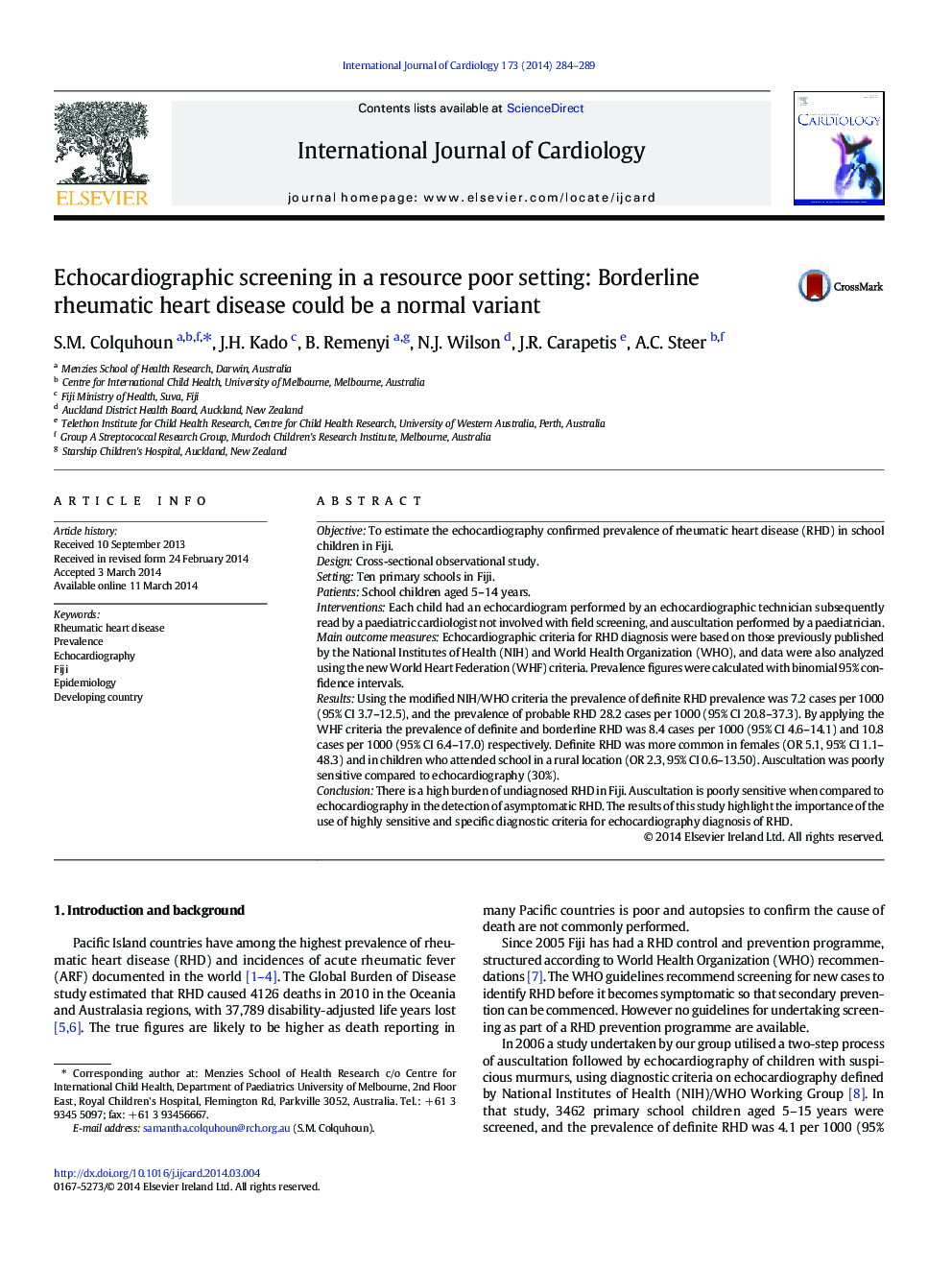| Article ID | Journal | Published Year | Pages | File Type |
|---|---|---|---|---|
| 5972270 | International Journal of Cardiology | 2014 | 6 Pages |
ObjectiveTo estimate the echocardiography confirmed prevalence of rheumatic heart disease (RHD) in school children in Fiji.DesignCross-sectional observational study.SettingTen primary schools in Fiji.PatientsSchool children aged 5-14Â years.InterventionsEach child had an echocardiogram performed by an echocardiographic technician subsequently read by a paediatric cardiologist not involved with field screening, and auscultation performed by a paediatrician.Main outcome measuresEchocardiographic criteria for RHD diagnosis were based on those previously published by the National Institutes of Health (NIH) and World Health Organization (WHO), and data were also analyzed using the new World Heart Federation (WHF) criteria. Prevalence figures were calculated with binomial 95% confidence intervals.ResultsUsing the modified NIH/WHO criteria the prevalence of definite RHD prevalence was 7.2 cases per 1000 (95% CI 3.7-12.5), and the prevalence of probable RHD 28.2 cases per 1000 (95% CI 20.8-37.3). By applying the WHF criteria the prevalence of definite and borderline RHD was 8.4 cases per 1000 (95% CI 4.6-14.1) and 10.8 cases per 1000 (95% CI 6.4-17.0) respectively. Definite RHD was more common in females (OR 5.1, 95% CI 1.1-48.3) and in children who attended school in a rural location (OR 2.3, 95% CI 0.6-13.50). Auscultation was poorly sensitive compared to echocardiography (30%).ConclusionThere is a high burden of undiagnosed RHD in Fiji. Auscultation is poorly sensitive when compared to echocardiography in the detection of asymptomatic RHD. The results of this study highlight the importance of the use of highly sensitive and specific diagnostic criteria for echocardiography diagnosis of RHD.
